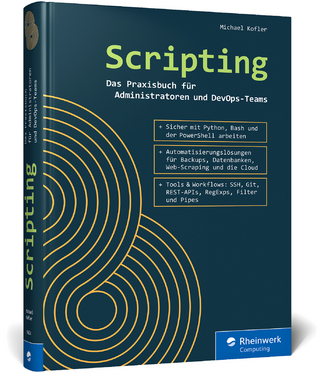
Energy Efficient Spectrum Resources Usage in WPANs
IEEE 82.15.4 MAC Sub-layer Protocols
Seiten
2023
River Publishers (Verlag)
978-87-7022-214-3 (ISBN)
River Publishers (Verlag)
978-87-7022-214-3 (ISBN)
This research reveals the importance of an appropriate design for the MAC sub-layer protocol for the desired WSN application. Depending on the mission of the WSN application, different protocols are required. Therefore, the overall performance of a WSN application certainly depends on the development and application of suitable e.g., MAC.
Wireless Sensor Networks (WSNs) and the Internet of Things are facing tremendous advances both in terms of energy-efficiency as well as in the number of available applications. Consequently, there are challenges that need to be tackled for the future generation of WSNs. After giving an overview of the WSN protocols and IEEE 802.15.4 standard, this book proposes IEEE 802.15.4 Medium Access Control (MAC) sub-layer performance enhancements by employing not only RTS/CTS combined with packet concatenation but also scheduled channel poling (MC-SCP). Results have shown that the use of the RTS/CTS mechanism improves channel efficiency by decreasing the deferral time before transmitting a data packet. Furthermore, the Sensor Block Acknowledgment MAC (SBACK-MAC) protocol enables more efficiency as it allows the aggregation of several acknowledgement responses in one special Block Acknowledgment (BACK) response packet. The throughput and delay performance have been mathematically derived under both ideal conditions (a channel environment with no transmission errors) and non-ideal conditions (with transmission errors). Simulation results successfully validate the proposed analytical models. This research reveals the importance of an appropriate design for the MAC sub-layer protocol for the desired WSN application. Depending on the mission of the WSN application, different protocols are required. Therefore, the overall performance of a WSN application certainly depends on the development and application of suitable e.g., MAC, network layer protocols.
Wireless Sensor Networks (WSNs) and the Internet of Things are facing tremendous advances both in terms of energy-efficiency as well as in the number of available applications. Consequently, there are challenges that need to be tackled for the future generation of WSNs. After giving an overview of the WSN protocols and IEEE 802.15.4 standard, this book proposes IEEE 802.15.4 Medium Access Control (MAC) sub-layer performance enhancements by employing not only RTS/CTS combined with packet concatenation but also scheduled channel poling (MC-SCP). Results have shown that the use of the RTS/CTS mechanism improves channel efficiency by decreasing the deferral time before transmitting a data packet. Furthermore, the Sensor Block Acknowledgment MAC (SBACK-MAC) protocol enables more efficiency as it allows the aggregation of several acknowledgement responses in one special Block Acknowledgment (BACK) response packet. The throughput and delay performance have been mathematically derived under both ideal conditions (a channel environment with no transmission errors) and non-ideal conditions (with transmission errors). Simulation results successfully validate the proposed analytical models. This research reveals the importance of an appropriate design for the MAC sub-layer protocol for the desired WSN application. Depending on the mission of the WSN application, different protocols are required. Therefore, the overall performance of a WSN application certainly depends on the development and application of suitable e.g., MAC, network layer protocols.
Fernando José Velez, Periklis Chatzimisios
1. Introduction 2. Medium Access Control and Physical Layers in WSNs 3. Further Insights into the IEEE 802.15.4 Standard 4. Scheduled Channel Polling MAC Protocol 5. Performance Evaluation of the SCP-MAC Protocol 6. MAC Sub-layer Protocols Employing RTS/CTS with Frame Concatenation 7. Multi-Channel-Scheduled Channel Polling Protocol 8. Conclusions and Suggestions for Future Research
| Erscheinungsdatum | 02.11.2020 |
|---|---|
| Reihe/Serie | River Publishers Series in Communications and Networking |
| Zusatzinfo | 42 Tables, black and white; 151 Halftones, color; 57 Halftones, black and white; 151 Illustrations, color; 57 Illustrations, black and white |
| Verlagsort | Gistrup |
| Sprache | englisch |
| Maße | 156 x 234 mm |
| Gewicht | 960 g |
| Themenwelt | Mathematik / Informatik ► Informatik ► Netzwerke |
| Mathematik / Informatik ► Informatik ► Theorie / Studium | |
| Technik ► Elektrotechnik / Energietechnik | |
| Technik ► Nachrichtentechnik | |
| Technik ► Umwelttechnik / Biotechnologie | |
| ISBN-10 | 87-7022-214-2 / 8770222142 |
| ISBN-13 | 978-87-7022-214-3 / 9788770222143 |
| Zustand | Neuware |
| Haben Sie eine Frage zum Produkt? |
Mehr entdecken
aus dem Bereich
aus dem Bereich
das umfassende Handbuch für den Einstieg in die Netzwerktechnik
Buch | Hardcover (2023)
Rheinwerk (Verlag)
29,90 €
das Praxisbuch für Admins und DevOps-Teams
Buch | Hardcover (2023)
Rheinwerk (Verlag)
39,90 €


